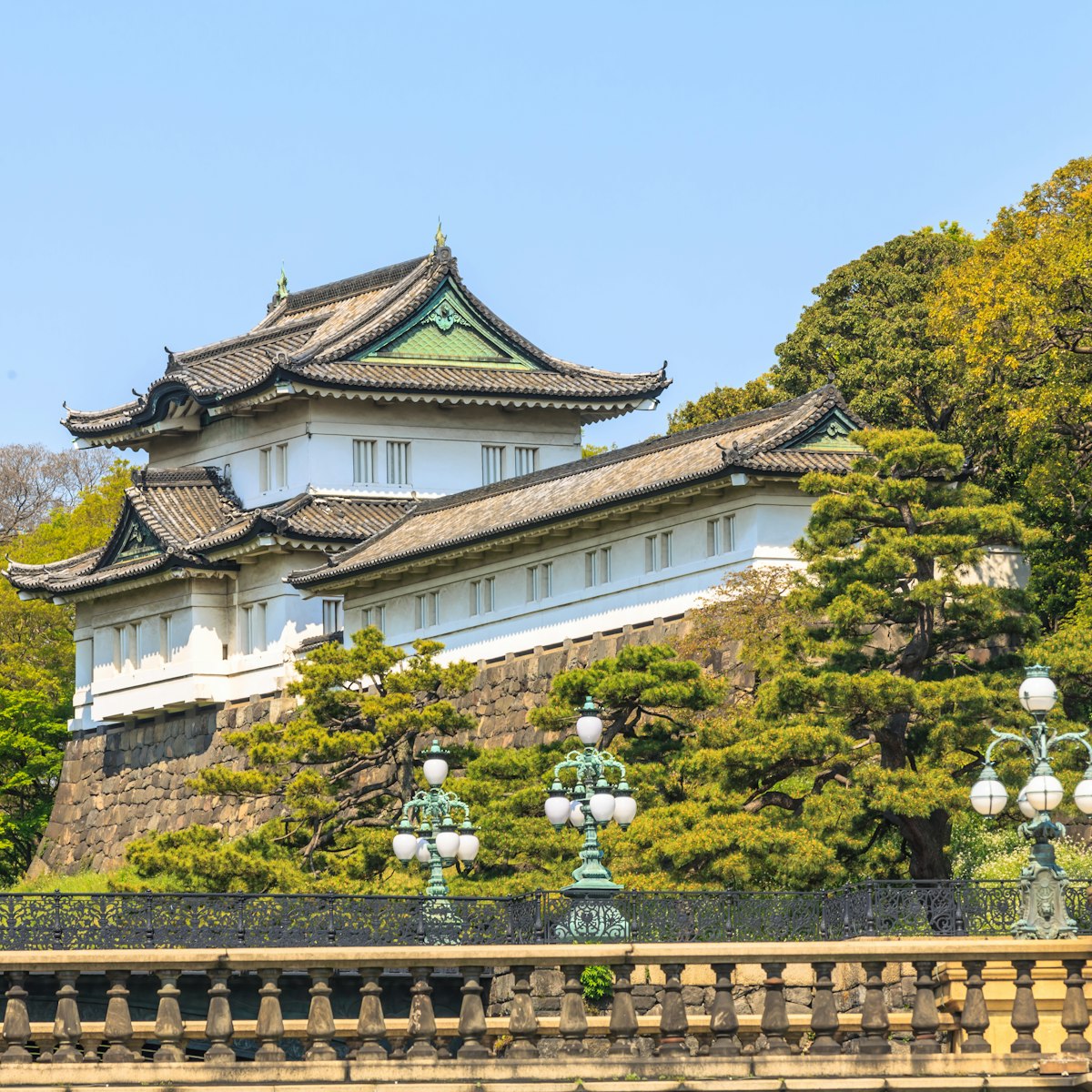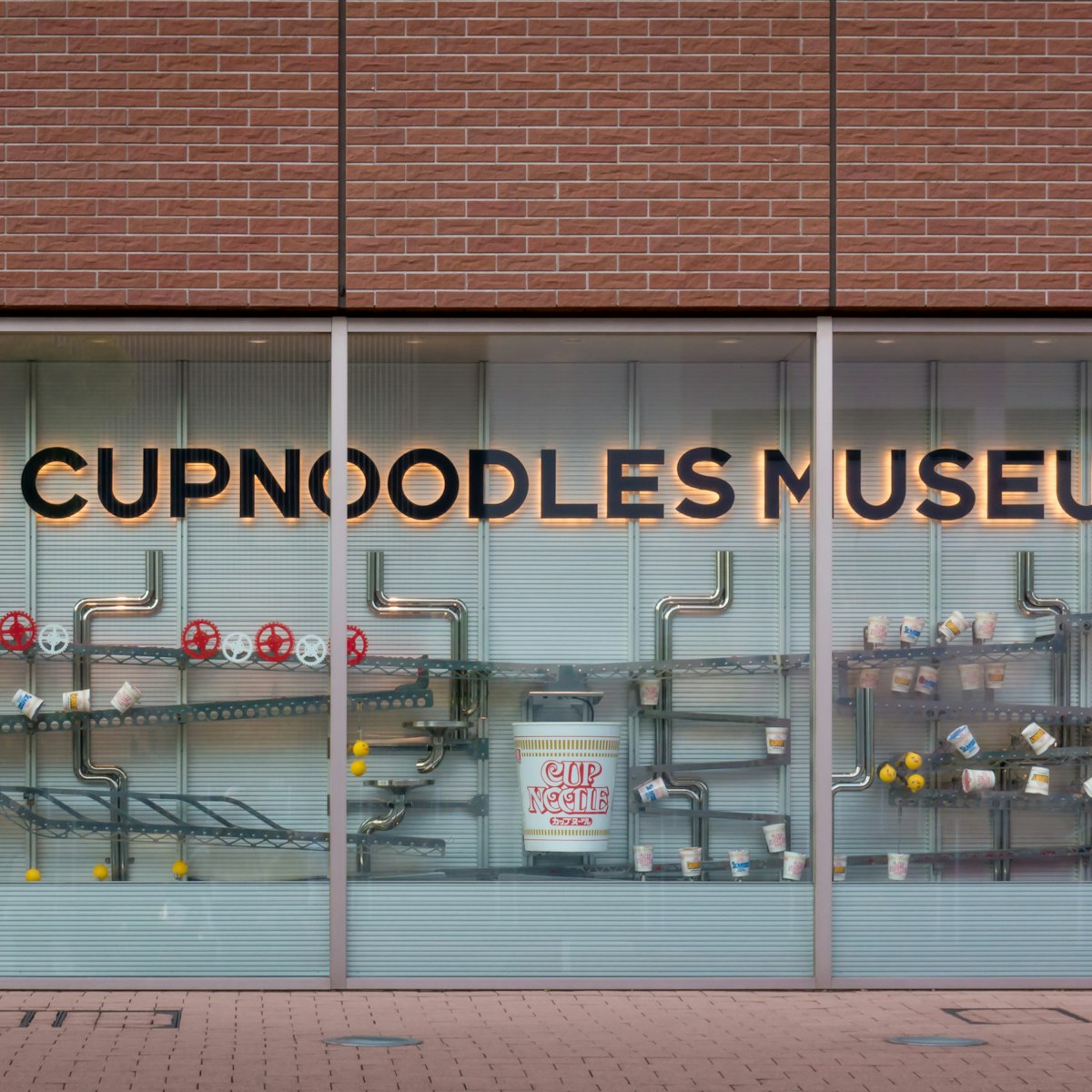Meaning 'Eyeglass Bridge', this stone bridge from 1888, which can be viewed from the KØkyo-gaien Plaza, is so nicknamed because its support arches reflected in the water create the appearance of spectacles. It's one of the most photographed images of the palace. Officially, it's the Imperial Palace Main Gate Stone Bridge (»Ź¾ÓÕżéTŹÆņ; KØkyo Seimon Ishi-bashi).
Lonely Planet's must-see attractions

0.19 MILES
The Imperial Palace occupies the site of the original Edo-jØ, the Tokugawa shogunate's castle. In its heyday this was the largest fortress in the world,”

10.42 MILES
This museum is the heart of the Studio Ghibli world, a beloved (even 'adored')?film studio responsible for classic, critically-acclaimed animated titles”

2.97 MILES
Golden Gai ØC a Shinjuku institution for over half a century ØC is a collection of tiny bars, often literally no bigger than a closet and seating maybe a”

2.93 MILES
If you visit only one museum in Tokyo, make it the Tokyo National Museum. Here you'll find the world's largest collection of Japanese art, including”

3.36 MILES
Rumoured to be the busiest intersection in the world (and definitely in Japan), Shibuya Crossing is like a giant beating heart, sending people in all”

16.8 MILES
This impressively slick attraction is dedicated to, you guessed it, cup noodles. But in reality, its focus is more broad, with numerous exhibitions”

1.44 MILES
Digital-art collective teamLab has created 60 artworks for this museum, open in 2018, that tests the border between art and the viewer: many are”

3.36 MILES
Tokyo”Æs most visited temple enshrines a golden image of Kannon (the Buddhist goddess of mercy), which, according to legend, was miraculously pulled out of”
Nearby Tokyo attractions
0.06 MILES
This metal bridge, built in 1888 and within the grounds of the Imperial Palace, was formerly a wooden bridge with two levels, from which its name (meaning”
0.11 MILES
This keep, constructed in 1559, once stood on the grounds of Kyoto's since-destroyed Fushimi Castle. It was dismantled and reassembled at Edo-jØ by”
0.11 MILES
Built in 1636 (and partially restored after the Great KantØ Earthquake in 1923), this is one of the Imperial Palace gates that was part of the original”
0.17 MILES
These 1960s ferro-concrete buildings, done in Japanese modernist style, are home to Japan's emperor and family. The central building contains the throne”
0.18 MILES
This wide grassy expanse, in the southeast corner of KØkyo-gaien, has roughly 2000 immaculately maintained Japanese black pine trees that were planted in”
0.19 MILES
The Imperial Palace occupies the site of the original Edo-jØ, the Tokugawa shogunate's castle. In its heyday this was the largest fortress in the world,”
0.22 MILES
This bridge provides access to the south of the KØkyo-gaien Plaza from Hibiya.
0.31 MILES
°¾±°ģ²āØ-³¾“Ē²Ō is one of the main original gates to Edo-jØ. This is the departure point for official tours of parts of the Imperial Palace grounds.